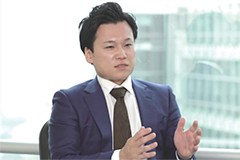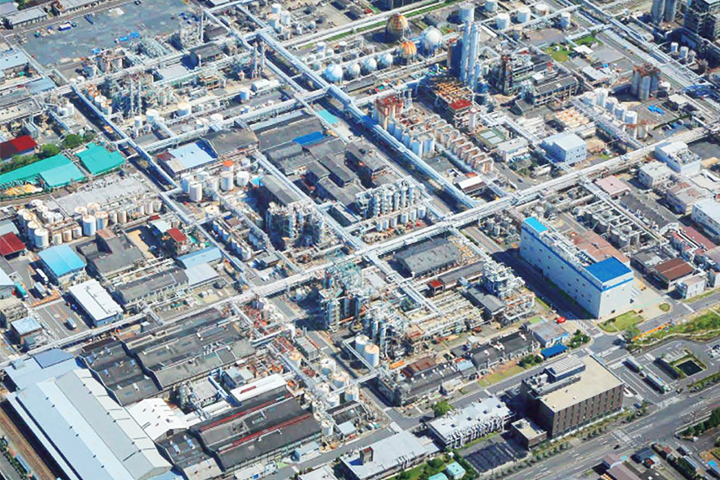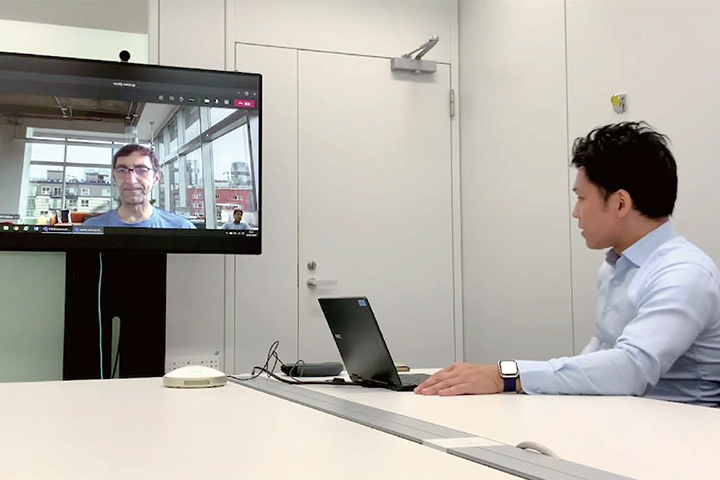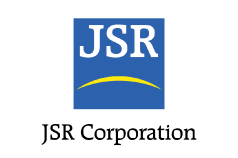JSR Corporation
Challenging to improve R&D productivity with the aim of becoming a single DX
By practicing enterprise agile development using SAFeR
Ensuring transparency and accelerating development in R&D in the manufacturing industry
Introduction points
- Introduced agile development methods to promote software development in R&D
- More than 30 researchers trained in TDC SOFT Inc. and promoted as agile transformation leaders
- Expectations to shorten the distance between R&D and business, and to expand into manufacturing and business.
Interviewee

Mr. Masahiro Okazaki
Background of Introduction
Aiming for DX in R&D
JSR Corporation, a materials manufacturer with MaterialsInnovation as its corporate philosophy, is utilizing digital technology in R&D as part of its digital transformation (DX).
The company’s emphasis in R&D, which is an upfront investment, is to establish R&D themes that are consistent with its business strategy and to deliver results while successfully controlling costs. However, prior to the introduction of SAFe® and agile development, some R&D themes were not consistent with the business strategy in terms of direction and objectives, and some R&D periods and costs were unclear.
R&D should be conducted within a limited cost range, and the appropriate outputs must be obtained for the budget invested. In other words, transparency is extremely important. To ensure transparency, agile development repeatedly produces small outputs in a short period of time (two weeks). Progress can be managed with transparency, which is clearly beneficial to the business unit. We thought that agile development was most suitable for software development in R&D,” said Okazaki.
Working on agile development from total ignorance
However, no one in R&D knew about agile development. That is when he met TDC SOFT. The digital manager of our group company in North America recommended Scrum development, but Japanese researchers, including myself, did not understand the terminology at all. There were many barriers such as language, time difference, and way of thinking, and we didn’t know where to start… TDC SOFT Inc. was very sincere and precise in their suggestions about our software development concerns and the site of our research and development. At that time, we were introduced to SAFe®, one of the agile development methods.
SAFe® (Scaled Agile Framework) connects the IT development site with management and business, where diversification of social and customer needs requires both large-scale and speedy development, to achieve corporate transformation and It is an agile development and business framework for enterprises to realize corporate transformation and business acceleration.
The world is changing at a rapid pace today. With SAFe®, agile development can be quickly redone when changes occur in society and customers, and there are fewer failures. We judged this to be the greatest merit and decided to introduce SAFe® agile development,” says Okazaki.
Effects of Introduction
Learn the essence of Agile through training
Until now, the company had adopted waterfall development and was unfamiliar with the concept of agile, which involves repeated development in a short period of time. Therefore, they started by attending T D C Software training to gain knowledge about SAFe® and agile development, and gradually introduced the essence of agile.
At first, there was a great deal of animosity from within the company. However, as they gained knowledge through training, applied it to actual development, and began to make good progress, they began to see the benefits. Today, they are very satisfied with the results.

Enables R&D linked to business strategy
Mr. Okazaki said that there are three changes resulting from the introduction of SAFe® and agile development.
- Realization of research and development in line with company policies and business unit strategies
- Ensure transparency of R&D timeframes and costs
- Visualization of progress, process, and responsibility in research and development
As a result of these changes, “We are now able to see whether progress is being made in each two-week sprint, and if not, where the problem lies, so development is no longer stalled. Furthermore, we have established a forum to regularly report to the company’s management and the heads of business divisions that development has progressed to this point and that we can deliver this kind of value to them. These activities have had the effect of clarifying what we are doing in R&D, and have created a relationship of trust with them,” says Okazaki.

Clarified roles and facilitated team communication
Mr. Okazaki says that collaboration among multiple locations has also become smoother.
In agile development, each team member has a clear role to play. For example, the Scrum Master removes barriers inside and outside the team. As employees learn these roles and responsibilities, their individual awareness of what kind of meetings are appropriate and what kind of points of contact will help communication proceed more smoothly has changed. We have factories and offices all over the world, but communication has become smoother, and the speed of R&D has dramatically increased,” says one employee, who also feels that the mindset of team members has changed.
From Researcher to Agile Transformation Leader
The organization and team members have not been changed for the introduction of SAFe® and agile development, and the same organization and members are operating the system. Currently, more than 30 people who have taken the training are working on SAFe® and Agile development as change leaders.
Future Outlook
Agile plant maintenance and inspection operations
Currently, SAFe® and agile development is being implemented in R&D, and the company hopes to introduce it to manufacturing and business operations in the future.
As a materials manufacturer, strengthening our R&D capabilities will give us an edge over our competitors. However, we also believe that it is necessary to use digital technology to deliver new value to customers, such as improving efficiency at manufacturing sites and strengthening sales and business operations, in order to amplify profits,“says Okazaki.
Already, efforts to reform operations using digital technology have begun in the field of plant maintenance and inspections. The petrochemical business has been in business for more than 60 years,” says Okazaki, “and after 60 years, cracks, corrosion, and various other inconveniences can occur in plant piping. However, there is a limit to how much the human eye can see cracks and corrosion in a large plant. We are working to improve the efficiency of maintenance through the use of digital technology. We would like to introduce SAFe® and agile development into the development of such a business support system,” says Okazaki.
Become an organization that can respond quickly to change with a customer value mindset
In addition, the company is also looking to introduce the system into the supply chain, which is the foundation of the manufacturing industry.
In manufacturing, the most important point is to deliver products to customers more cheaply, reliably, and on time than anywhere else. SAFe® and agile development will be applied to the development of large-scale supply chain systems to increase productivity and ensure accurate supply chain management. This activity will improve the way we approach our customers, reduce costs, and further enhance their confidence in us,” said Okazaki.
However, there are some challenges. SAFe® and agile development are frameworks that allow change and continue to work with uncertainty. In other words, management must change the way it has been thinking” (Okazaki), and management transformation is an issue for the future.
However, he added the following. Our most important thing is to be close to our customers, to live up to their trust, and to conduct our business from their point of view. This is exactly the same concept as SAFe® and agile development. We are currently only introducing it in R&D, but I am confident that it will eventually be introduced and permeate into manufacturing and business operations,” said Okazaki.
By placing customer value at the center of its corporate activities and reducing the distance between development and business, the company can flexibly respond to ever-changing customer needs and market trends and demonstrate agility. The company is practicing agile development while successfully incorporating the essence of SAFe®, which systematizes it, and is trying to grow it in a big way by taking steps from small successes. This case study will provide hints for many companies that want to effectively promote business transformation.
Company Information

JSR Corporation
Since its founding in 1957, JSR has focused on bringing innovation to the chemical industry by supplying synthetic rubber for tires in Japan. This has allowed us to continually develop and enter new markets. Today, our businesses range from elastomers and plastics to digital solutions and, more recently, life sciences.
- Establishment
- December 10, 1957
- Location
- Shiodome Sumitomo Building 22F, 1-9-2 Higashi-Shinbashi, Minato-ku, Tokyo
- Home page
- https://www.jsr.co.jp/
-
This article is based on interviews conducted in October 2020. The data, organization names, and positions in the article are current at the time of the interview.
-
SAFe® (Scaled Agile Framework®) is a registered trademark of Scaled Agile, Inc. in the United States and other countries.
-
All company and service names mentioned herein are trademarks or registered trademarks of their respective companies.
-
TDC SOFT Inc. is a Scaled Agile Gold Transformation Partner in the Scaled Agile Partner Program of Scaled Agile, Inc.
